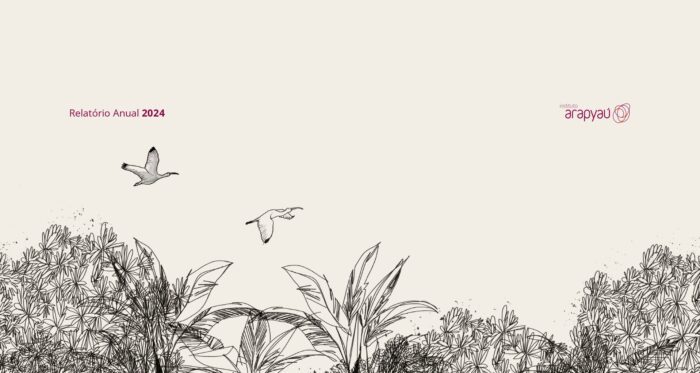
In a world that demands urgency, collaboration, and boldness, Instituto Arapyaú has expanded the scale of its actions. The recently launched institute’s activities report reveals a year marked by structuring initiatives and innovative strategies to leverage the bioeconomy and forest restoration in Brazil. With a graphic approach inspired by sketches, symbolizing the continuous construction process, the document is more than a balance sheet: it is an invitation to navigate through the solutions that arise when acting with collective intelligence.
“The climate crisis — the greatest common challenge of our era — requires philanthropy to broaden its vision and act systemically, mobilizing governments, businesses, and civil society to maximize collective impact,” highlights Renata Piazzon, general director of Arapyaú, in the document’s editorial. “We have the potential to lead a new development model that combines economic prosperity and environmental conservation,” she adds.
This ambition materialized in initiatives such as Kawá, the first large-scale Brazilian fund focused on family cocoa farming, and the pre-competitive movement for forest restoration, which brings together 25 companies and institutions around a new green economic sector. In total, over R$45 million were invested in various projects, focusing on high-impact sustainable solutions.
“The strength of Arapyaú — and of philanthropy — lies not only in financing, but in designing solutions, testing alternatives, and building innovative economic models,” says Roberto Waack, president of the institute’s board.
The report also celebrates the maturity of networks such as the Brazil Climate, Forests and Agriculture Coalition, A Concertation for the Amazon, and Forest Peoples Connection, as well as the consolidation of international partnerships — such as Arapyaú’s entry into the Planetary Guardians collective board, a global initiative of environmental leaders and activists. The institute is the first Brazilian organization to join this group.
Arapyaú’s role as a facilitator in the global philanthropy scene was also highlighted in an immersion at the Bellagio Center in Italy, where representatives from the public and private sectors, civil society, philanthropy, academia, and finance came together to collectively think about territorial development ideas for the Amazon. At the New York Climate Week, the organization set its own agenda, promoting its vision of a leading Brazil in the green economy.
With COP30 in Belém on the horizon, the institute reinforces its role as a bridge builder between philanthropy, the private sector, and the government, and supporter of nature-based solutions. When taking stock of the past year and setting in motion projects of the present and future, one certainty remains: there is no sustainable development without networks, nor strong networks without real collaboration. “In the collective and in diversity, every vision, every analysis, and every solution creation is better,” summarizes Waack.